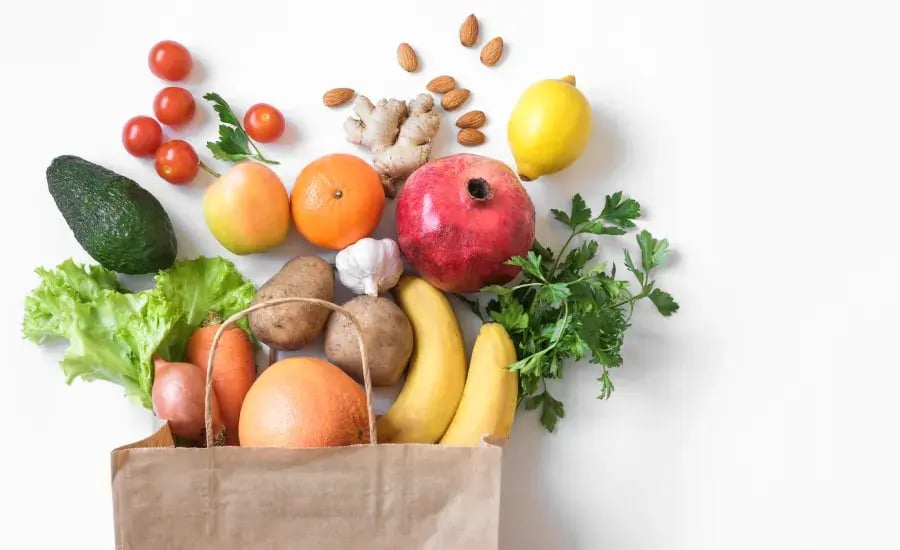
Grocery
Built for the flow
of grocery retail
There’s no time for downtime in grocery retail. Transaction volumes are high, margins are tight, and campaign pressure is constant. Stores are open early and close late, if at all. Everything needs to run. Always.
Customers expect quick checkout, correct pricing and access to loyalty benefits no matter how or where they shop. For retailers, success depends on performance, flexibility and the ability to adapt without slowing down operations.
Key challenges in grocery
High volume and constant throughput
Grocery stores handle a large number of transactions every day. Systems must run at full capacity during peak hours, campaign launches and shift changes. Stability is essential.
Multiple checkout formats
Staffed lanes, self-checkout (SCO), fast lanes and mobile POS are often combined. The POS must support all formats in one system and keep transactions flowing for customers and staff alike.
Dynamic campaigns and discount logic
Promotions change frequently. So do prices and customer-specific discounts. Everything must be calculated correctly and applied instantly at checkout, no matter the format.
Fraud prevention in self-service formats
Grocery chains face increasing pressure to reduce shrink, especially around self-checkout and Scan&Go. Checkout systems need built-in control mechanisms that help detect and prevent fraud without affecting flow.
Loyalty, segmentation and personalisation
With tight margins, building customer loyalty is crucial. Systems should support loyalty clubs, app-based rewards and targeted campaigns that feel relevant and work across channels.
Staff onboarding and shift changes
New and part-time staff need to be productive quickly. POS screens must be intuitive, reduce errors and help staff focus on tasks that matter in high-volume stores.
Uptime and operational resilience
When systems go down, sales are lost. Grocery retailers need solutions that keep working even in case of outages or cyberattacks, including full offline capability.
Retail media and digital receipts
Stores increasingly use customer-facing screens, electronic shelf labels (ESLs) and personalised offers. Receipts need to be available digitally and used to measure campaign performance across touchpoints.
What does it take to succeed?
To run efficient grocery operations, your systems need to support store reality. That means adapting to campaign changes, checkout formats and staff needs without extra complexity behind the scenes.
-
fast and stable checkout, even under heavy load
-
real-time pricing and campaign execution
-
self-checkout (SCO), Scan&Go, mobile POS and fast lane support
-
loyalty integration with coupons, apps and customer data
-
fast onboarding with clear, role-based POS interfaces
-
fraud detection that works in live checkout environments
-
reliable fallback modes and data recovery
-
cloud-ready deployment and reuse of hardware
-
integrations that sync price, stock and reporting
-
access to data and APIs for business control and compliance

How Fiftytwo supports grocery retailers
With extensive experience in the grocery industry, Fiftytwo understands the sector's challenges and excels in delivering solutions that meet its unique demands.
Here are some ways 52ViKING supports the grocery industry:
Fast, stable checkout across formats
Real-time pricing with full campaign logic
Mobile POS for flexible service
gives staff the ability to handle sales, answer questions and support customers on the floor. It is ideal in large-format grocery stores or early in the day when orders are picked before opening hours.
POS Designer for tailored layouts
Loyalty and personal offers
Self-checkout (SCO) and Scan&Go support
use the same pricing and campaign logic as traditional tills. Customers get a consistent experience. Staff can monitor and assist when needed. Built-in rules support fraud prevention in high-volume, high-risk scenarios.
Support for unattended and hybrid formats
SoftPOS and tap-on-screen
Fraud detection and data control
Emergency POS for business continuity
keeps stores open using secure local data if a system outage or cyberattack occurs. Sales continue without disruption. Monitoring tools help detect potential issues early so they can be resolved before they escalate.
Retail media and ESL integration
Hybrid deployment and hardware reuse
Central and local store management
Transparent logging and analytics
Retailers benefiting from the Fiftytwo POS solution
Føtex, Bilka, and Salling stores in Denmark, as well as Netto stores in Denmark, Germany, and Poland
Read customer caseSimplify your retail operations
See how Fiftytwo’s 52ViKING POS connects sales channels, keeps prices consistent and makes daily work easier for staff. Run large-format and city DIY stores on the same platform.
See all offerings

Let me help you!
Reach out to me and I will make sure to answer your questions
or guide you in the right direction.